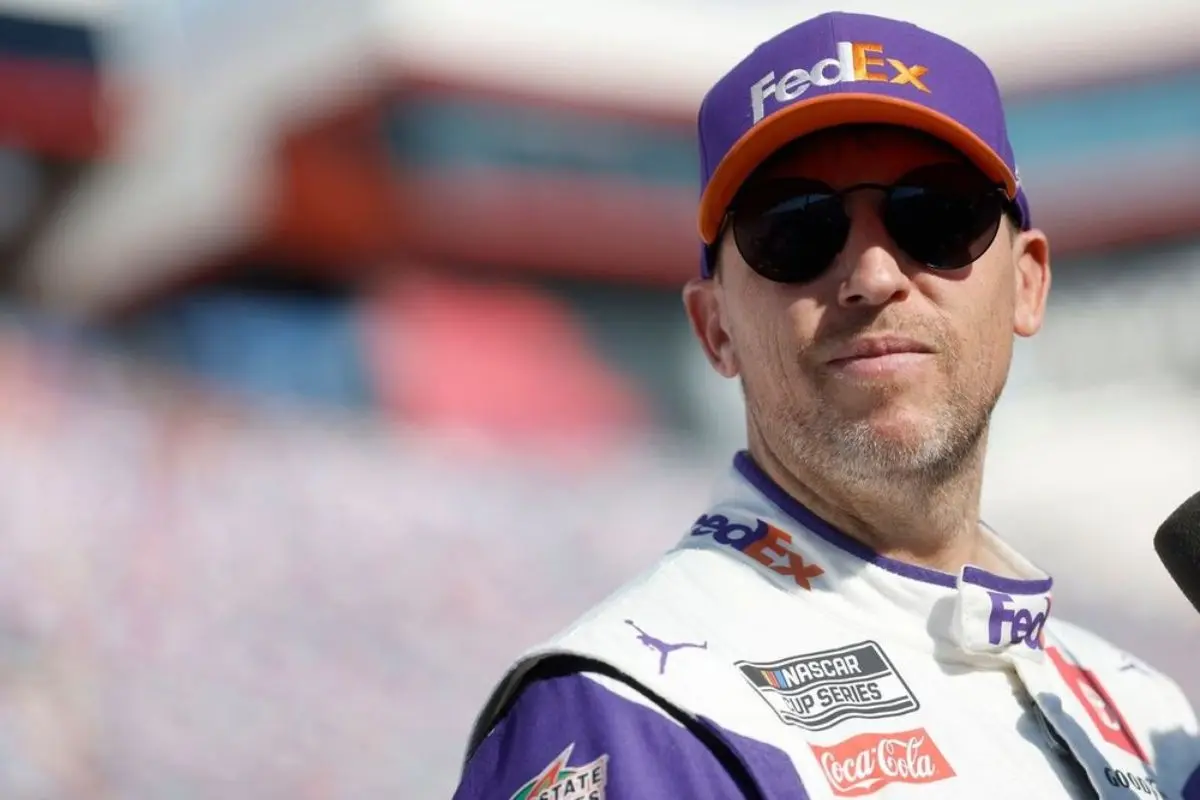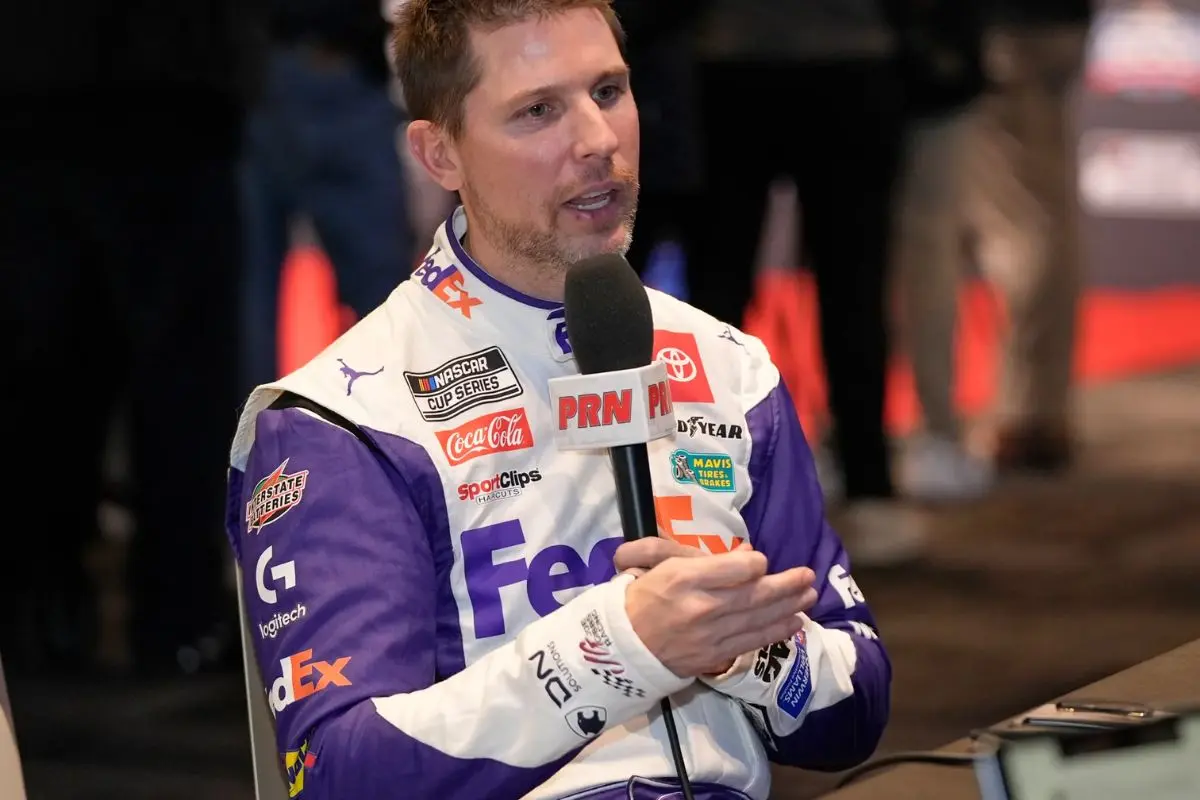Chris Gabehart defends Denny Hamlin after the tough race at Homestead shows how complicated competitive racing can be. Denny Hamlin faced problems during the race, like mechanical issues and tactical mistakes, leading Chris Gabehart to focus on outside factors rather than personal failings. He pointed out that the race had 33 lead changes, making it harder to predict outcomes. Chris Gabehart highlighted Denny Hamlin’s experience and ability to adapt as important strengths, suggesting that learning from past races can help improve future performances. While some may question this view, Chris Gabehart’s perspective shows a deeper understanding of racing challenges.
Key Highlights
- Chris Gabehart emphasized that the Homestead NASCAR race featured intense competition with 33 lead changes, highlighting the strategic complexity of the event.
- Gabehart attributed Hamlin’s struggles in NASCAR to the nature of the track rather than a lack of skill or effort on Hamlin’s part.
- The high lane’s limited success during the NASCAR race underscored the challenges drivers faced, impacting their strategies and performance.
- Gabehart defended Hamlin’s strategic mindset and adaptability in NASCAR, noting his past successes as evidence of his capability to overcome challenges.
- The new tire package in NASCAR presents an opportunity for Hamlin to leverage his experience in tire management, enhancing his potential in upcoming races.
Denny Hamlin’s Near Miss at Homestead
In the waning moments of the NASCAR race at Homestead, Denny Hamlin found himself in a precarious yet promising position, poised to secure a spot in the NASCAR championship 4. With just eight laps remaining, he held a commanding lead, a potential climax of tactical skill and driving ability that would allow him to redeem past disappointments in NASCAR.
However, the closing laps revealed a familiar narrative, as Hamlin faltered under strain, yielding his hard-earned advantage to Ryan Blaney and ultimately succumbing to Tyler Reddick, who claimed victory in a dramatic NASCAR finale.
This near miss is representative of a broader trend in Hamlin’s NASCAR career, where moments of brilliance are often overshadowed by critical mistakes at crucial points. His admission over the radio—”I let you down; I’m sorry”—not only reflects personal accountability but also highlights the weight of expectations that accompany his status as a veteran NASCAR driver.
The contrast of his strong performance against the backdrop of missed opportunity is particularly poignant; it raises questions about whether the psychological burden of past failures influences his decision-making in such high-stakes NASCAR situations.
As the dust settles from Homestead, the implications extend beyond mere results, prompting deeper analysis of Hamlin’s approach to racing under strain in NASCAR. This recurring theme of near misses prompts a reevaluation of both his mental resilience and the tactics employed by the #11 team.
Will Hamlin learn from this experience, or will it continue to haunt him in the NASCAR playoffs? Only time will tell.
Chris Gabehart’s Insight on the Homestead Finish
The dramatic resolution at Homestead sparked a range of reactions, particularly from Chris Gabehart, crew chief for Denny Hamlin. Gabehart provided a detailed analysis of the final laps, emphasizing the unique challenges posed by the Homestead track, which served as a wildcard in the race. With 33 lead changes, the event demonstrated the versatility of the Next-Gen car, creating an unpredictable environment for drivers.
Gabehart noted that while the high lane was favored, only a select few drivers successfully performed that strategy. Tyler Reddick’s impressive slingshot maneuver on Ryan Blaney highlighted the tactical complexity of the race. He acknowledged the No. 11 toyota/”>Toyota Camry’s struggles on short runs, attributing the outcome to the nature of the track rather than a lack of skill on Hamlin’s part.
“I don’t think Denny let the team down. Like there was a tough situation and he just guessed wrong in a couple of instances, just no different than Blaney says he did. Many times I’ve seen Denny bounce back from a scenario where he felt like he let the team down, where he felt like he did something wrong, he comes back pretty strong the next week.” – Chris Gabehart
Gabehart’s defense of Hamlin emphasized that mistakes are part of racing, and he expressed confidence in Hamlin’s ability to rebound from setbacks. This perspective sheds light on the mentality required in motorsport, where resilience and adaptability are paramount.
Reflecting on the Final Moments
Amid the intense competition, the final moments of the race presented the delicate balance between aggression and caution that drivers must navigate. As Chris Gabehart pointed out, the dynamics of the lead created a scenario where those in front had much to lose, while challengers had everything to gain. This inherent stress shifted the tactical landscape, compelling the leader to adopt a more conservative approach, a tactic that often proves perilous in the closing laps.
“I reflected on it. Any of them that were leading at that time all of a sudden had something really big to lose, and the other two had nothing but gain ahead of them. So it could be ultra-aggressive while the leader had to be a little bit conservative, and I really think that track coupled with them is why you saw two lead changes in the final lap and half. It was a tough one, for sure, but a great race. I mean a great race to be a part of.” – Chris Gabehart
The track conditions at Homestead further exacerbated this tension. With only a lap and a half remaining, the urgency bred a frenetic atmosphere, leading to two notable lead changes. Such a rapid shift highlights the unpredictable nature of racing, where a moment’s hesitation can result in a lost opportunity. Gabehart’s insights reveal the psychological warfare at play; the leaders, burdened by the prospect of defeat, were pitted against hungry competitors enthusiastic to capitalize on any misstep.
Ultimately, the final moments of the race serve as a microcosm of the broader competitive landscape in NASCAR. Drivers must continually assess their risks and rewards, a ballet of instinct and strategy that defines the sport.
Denny Hamlin’s Short-Track History
Denny Hamlin’s Optimism and Strategic Edge
While many drivers may be apprehensive about the new tire package introduced by Goodyear during the NASCAR playoffs, Denny Hamlin approaches the change with a blend of optimism and tactical foresight. His commendation of Goodyear for their initiative reflects not just a positive outlook but an understanding of the tactical implications involved in NASCAR.
Hamlin recognizes the inherent variability in tire performance as the race unfolds, particularly in such a NASCAR environment where rubber accumulates and conditions evolve.
Hamlin’s experience at the spring Bristol race serves as a noteworthy advantage. His ability to navigate tire conservation effectively while others faltered positions him as a formidable contender in the NASCAR playoffs. Unlike his peers, who may succumb to the demands of managing tire degradation, Hamlin’s past success under similar circumstances equips him with the knowledge and confidence to excel in NASCAR racing.
“It was a thing when they were testing it; the only difference is certainly you’re going to have all those cars out there and it’s going to rubber up and the tire will go away somewhat, but I really applaud Goodyear to go out there and have the nerve to put this tire on in the playoffs. Certainly excited to see how that turns out.” – denny Hamlin
This unique insight allows him to anticipate challenges and adjust his race strategy accordingly.
As the NASCAR playoffs progress, it becomes increasingly evident that tire management will play a crucial role in determining race outcomes. Hamlin’s mastery over this aspect not only improves his competitive edge but also casts a shadow over those who might hope for his early exit from the NASCAR playoffs.
News in Brief: Chris Gabehart Defends Denny Hamlin
The analysis of Denny Hamlin’s performance at Homestead, alongside Chris Gabehart’s defense, highlights the complexities inherent in competitive NASCAR racing. Factors such as tactical decisions, car handling, and situational demands contribute greatly to outcomes. Hamlin’s established history on short tracks, coupled with a forward-looking optimism, suggests potential for future success in NASCAR.
Ultimately, the combination of experience and planning may serve to improve Hamlin’s competitive edge in subsequent NASCAR races, reinforcing the importance of adaptability in such environments.
ALSO READ: Denny Hamlin Admits Ryan Blaney Was Just Better Than Him on That Crushing Final Lap



